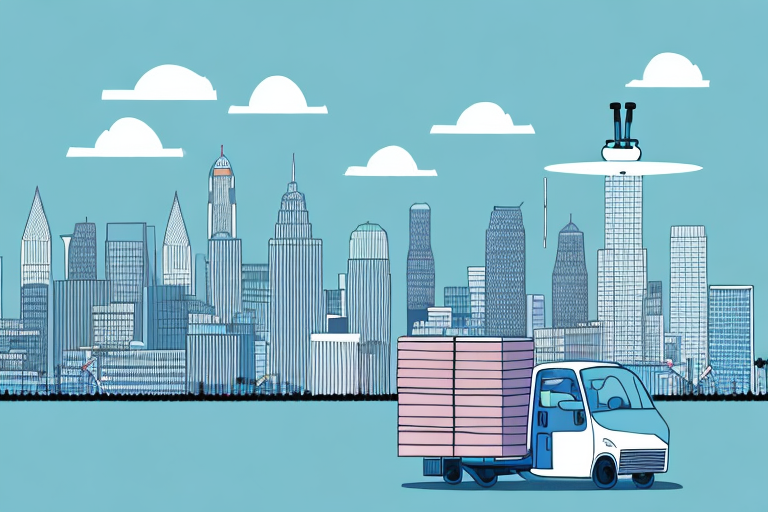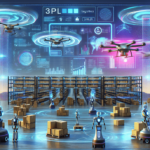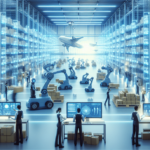When Was Amazon Founded and When Did It Start Delivering?
When it comes to online shopping, Amazon is a household name synonymous with convenience, vast selection, and expedited delivery services. It’s challenging to envision the modern retail landscape without Amazon, but the company began with humble origins as a book-selling platform. This article delves into Amazon's history, its delivery services, and its significant impact on the retail industry and beyond.
The Early Days of Amazon: A Brief History
Founding and Initial Vision
Amazon was founded on July 5, 1994, by Jeff Bezos. Initially conceived as an online bookstore, Bezos aimed to offer a broader selection of titles than traditional brick-and-mortar bookstores could provide. The early years were fraught with challenges, including profitability issues and skepticism from investors and analysts.
Expansion Beyond Books
Bezos remained committed to his vision of unparalleled customer convenience and selection. By the late 1990s, Amazon expanded its product offerings to include music, electronics, and more. This diversification was pivotal in transforming Amazon into one of the world’s largest e-commerce platforms. By 2000, Amazon reported over $10 billion in sales, setting the stage for its continued growth.
Technological Innovations
In 2002, Amazon launched Amazon Web Services (AWS), a groundbreaking cloud computing platform that has become a cornerstone of the tech industry. AWS provides businesses with scalable computing power and storage solutions, eliminating the need for significant upfront hardware investments. As of 2023, AWS accounts for a substantial portion of Amazon’s revenue, generating over $80 billion annually.
The Visionaries Behind Amazon’s Founding
Jeff Bezos: The Driving Force
Jeff Bezos is the visionary behind Amazon's inception. His deep understanding of e-commerce and the potential of the internet played a crucial role in shaping Amazon's strategy. Bezos's relentless focus on customer service, competitive pricing, and vast product selection has been instrumental in Amazon’s success.
Early Support and Team
Bezos was not alone in his entrepreneurial journey. Early support from his parents, who invested $300,000 in the startup, was vital. His mother served as the company’s first accountant, while his father assisted in constructing shelving for Amazon’s initial warehouse. Additionally, a dedicated team of engineers and developers contributed to building Amazon’s robust platform.
The Launch of Amazon.com: A Game-Changer for Online Retail
Website Launch and Initial Reception
Amazon.com officially launched in 1995, marking a significant milestone in e-commerce history. The user-friendly website allowed customers to browse and purchase books from the comfort of their homes. Despite early challenges such as slow loading times and limited inventory, Amazon quickly gained popularity for its convenience and competitive pricing.
Growth and Customer Acquisition
By leveraging an intuitive interface and efficient delivery system, Amazon attracted millions of customers. In 1997, Amazon went public, raising $54 million and further fueling its expansion. The company’s ability to scale rapidly set it apart from competitors and solidified its position as a leader in online retail.
Amazon’s Evolving Business Model: From Bookseller to Everything Store
Diversification of Product Offerings
While books were Amazon’s initial focus, the company swiftly expanded into other categories. In 1998, Amazon began selling music and DVDs, followed by consumer electronics, clothing, and home goods. This strategic diversification transformed Amazon into a comprehensive e-commerce platform.
Key Milestones and Services
- Amazon Prime (2005): Introduced as a subscription service offering free two-day shipping, Prime has since evolved to include streaming services, exclusive deals, and more.
- Amazon Web Services (2006): Expanded AWS offerings, becoming a major revenue stream for the company.
- Acquisitions and Partnerships: Strategic acquisitions like Whole Foods Market (2017) and partnerships with various tech companies have further diversified Amazon’s portfolio.
When Did Amazon Start Delivering? A Timeline of the Company’s Logistics Expansion
Early Delivery Innovations
Amazon has consistently prioritized fast delivery, investing heavily in its logistics infrastructure. In 2005, the company launched Amazon Prime, offering free two-day shipping to members—a revolutionary move that redefined customer expectations in e-commerce.
Advancements in Delivery Speed
- 2015: Introduction of same-day and one-day delivery options in select areas.
- 2013: Began testing drone delivery with the aim of delivering packages within 30 minutes, though this technology is still under development.
- 2020: Expansion of last-mile delivery services through Amazon Logistics, reducing reliance on third-party carriers.
How Amazon’s Delivery Network Works: From Fulfillment Centers to Your Doorstep
Fulfillment Centers
Amazon operates an extensive network of fulfillment centers—large warehouses where products are stored, processed, and shipped. These centers are strategically located to optimize delivery times and reduce shipping costs.
Smart Inventory Management
When an order is placed, Amazon’s systems identify the nearest fulfillment center with the available inventory, ensuring swift processing and shipping. Advanced algorithms manage inventory levels to anticipate demand and maintain stock efficiency.
Carrier Partnerships and In-House Logistics
Amazon collaborates with various carriers, including the United States Postal Service (USPS), UPS, and FedEx. Additionally, Amazon has developed its own delivery network, Amazon Logistics, which enhances control over the shipping process and improves delivery reliability.
Innovations in Delivery: Same-Day, One-Day, and Two-Hour Shipping
Enhanced Delivery Options
Building on the success of two-day shipping, Amazon has introduced even faster delivery options to meet growing customer demands. These include:
- Same-Day Delivery: Available in major metropolitan areas, allowing customers to receive orders within hours.
- One-Day Delivery: Widely available for Prime members, ensuring next-day delivery on millions of items.
- Two-Hour Delivery: Implemented in select locations through partnerships with local delivery services and the use of Amazon Lockers.
Technological and Logistical Enhancements
Amazon employs advanced technologies to optimize its delivery processes, such as:
- Routing Algorithms: Optimize delivery routes for efficiency and speed.
- Real-Time Tracking: Allows customers to monitor their orders from shipment to delivery.
- Automation and Robotics: Streamline warehouse operations and expedite order processing.
The Impact of Amazon on the Retail Industry: Disruption and Dominance
Transformation of Consumer Behavior
Amazon has fundamentally changed how consumers shop, emphasizing convenience, competitive pricing, and a vast selection of products. The company's success has led to increased expectations for delivery speed and service quality across the retail sector.
Challenges to Traditional Retailers
Amazon's dominance has posed significant challenges to traditional brick-and-mortar stores, many of which have struggled to compete with its pricing and inventory breadth. This shift has accelerated the decline of some retail chains while pushing others to adopt online strategies.
Controversies and Criticisms
Amazon's market dominance has attracted scrutiny and criticism, including:
- Antitrust Concerns: Allegations of anti-competitive practices and market monopolization.
- Labor Practices: Reports of challenging working conditions in fulfillment centers.
- Data Privacy: Concerns over how customer data is collected and utilized.
Despite these issues, Amazon continues to maintain its leading position, driven by continuous innovation and strategic expansion.
Future Plans and Challenges for Amazon’s Delivery Services
Ongoing Investments in Logistics
Amazon is committed to expanding its logistics and delivery capabilities. Future plans include:
- Expansion of Fulfillment Centers: Increasing the number of fulfillment centers globally to enhance delivery speed.
- Advanced Delivery Technologies: Further development of drone delivery and autonomous vehicles to reduce delivery times and costs.
- Green Logistics: Investing in sustainable delivery methods to reduce environmental impact.
Navigating Competitive Pressures
As competitors like Walmart and Alibaba strengthen their e-commerce and delivery services, Amazon must continue to innovate to maintain its edge. Adapting to changing consumer preferences, such as the growing demand for sustainable and flexible delivery options, will be crucial for sustained success.
Beyond Delivery: Exploring Amazon’s Diversified Business Ventures
Amazon Web Services (AWS)
AWS remains a pivotal component of Amazon's business model, offering a comprehensive suite of cloud computing services. AWS supports a vast array of businesses, from startups to large enterprises, providing scalable and reliable infrastructure solutions.
Entertainment and Media
Amazon Studios produces original films and television series, contributing to the company's presence in the entertainment industry. Amazon Prime Video competes with other streaming platforms by offering exclusive content and a diverse library of media.
Grocery and Physical Retail
With the acquisition of Whole Foods Market in 2017, Amazon significantly expanded its footprint in the grocery sector. Amazon Fresh provides an online grocery shopping experience, integrating with Whole Foods to offer a range of fresh and organic products.
Customer Satisfaction and Loyalty: How Amazon Prioritizes the Consumer Experience
Customer-Centric Policies
Amazon’s success is deeply rooted in its focus on customer satisfaction. Key policies include:
- Fast Shipping: Ensures quick delivery through services like Amazon Prime.
- Easy Returns: Simplifies the return process to enhance customer trust and satisfaction.
- Responsive Support: Provides efficient customer service to address inquiries and issues promptly.
Personalization and Convenience
Amazon leverages data analytics and artificial intelligence to personalize the shopping experience. Features such as personalized recommendations, one-click ordering, and voice-enabled shopping via Amazon Alexa enhance convenience and user engagement.
The Role of Technology in Amazon’s Success Story
Advanced Technologies Driving Efficiency
Amazon's ability to innovate and integrate advanced technologies is a key factor in its success. The company utilizes:
- Machine Learning and AI: Power personalized recommendations and optimize logistics operations.
- Robotics and Automation: Streamline warehouse processes and increase order fulfillment speed.
- Cloud Computing: AWS provides the backbone for Amazon’s vast online infrastructure.
Future Technological Ventures
Looking ahead, Amazon continues to invest in cutting-edge technologies, including:
- Drones and Autonomous Vehicles: Aim to revolutionize last-mile delivery.
- Artificial Intelligence: Enhances customer service through advanced chatbots and virtual assistants.
- Internet of Things (IoT): Integrates smart home devices to create a seamless user experience.
Global Expansion and Competition: How Amazon is Taking Over the World
International Presence and Market Penetration
Amazon operates in over 20 countries, with significant markets in North America, Europe, and Asia. Its global expansion strategy includes localized websites, fulfillment centers, and tailored services to meet diverse regional demands.
Facing Global Competitors
Amazon competes with major global players such as Alibaba, Walmart, and Target. These competitors are continually enhancing their e-commerce platforms and logistics capabilities to challenge Amazon’s dominance.
Adapting to Regional Markets
To maintain its competitive edge, Amazon adapts its strategies to cater to regional preferences and regulatory environments. For instance, in India, Amazon has focused on expanding its marketplace and investing in local logistics infrastructure to better serve the vast and diverse population.
Conclusion: A Look Back and a Look Forward
Since Jeff Bezos founded Amazon in 1994, the company has evolved from an online bookstore into a global e-commerce and technology powerhouse. Amazon's extensive logistics network, customer-centric approach, and relentless innovation have solidified its position in the global economy.
As Amazon continues to grow and diversify its ventures, the company's focus on delivery and logistics remains a cornerstone of its strategy. Whether through same-day shipping, drone delivery, or emerging technologies, Amazon is poised to continue pushing the boundaries of what’s possible in the delivery industry and beyond.




















